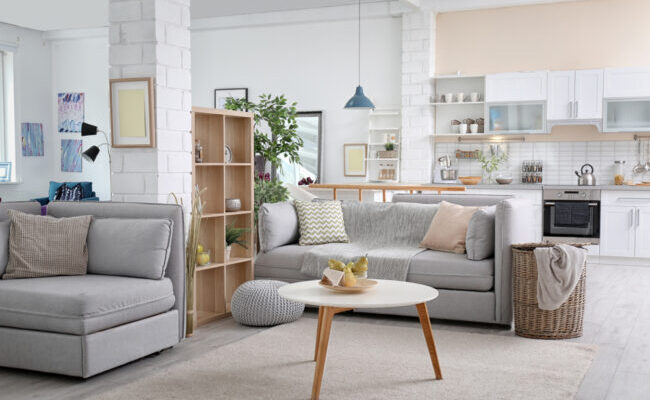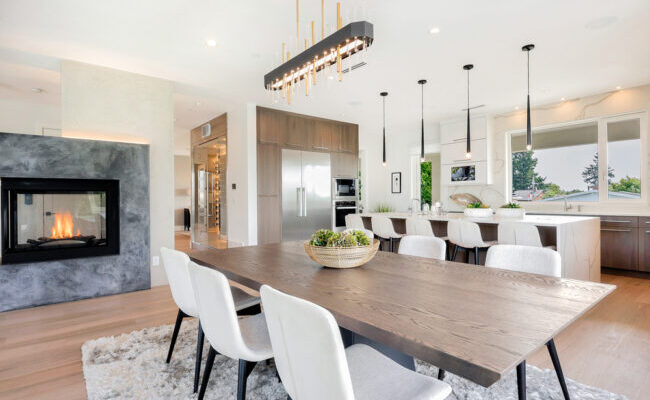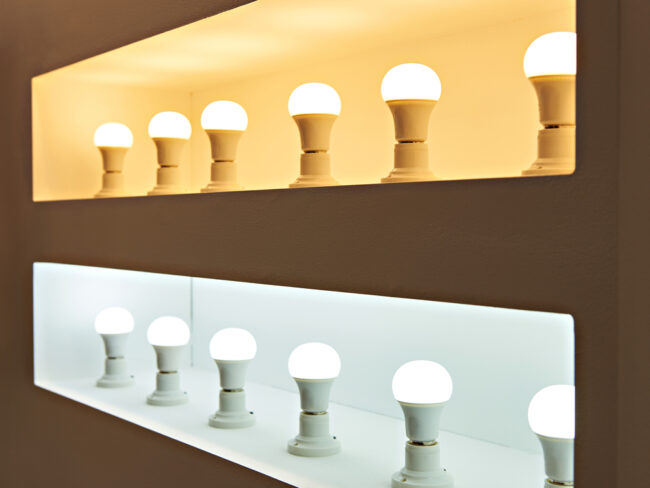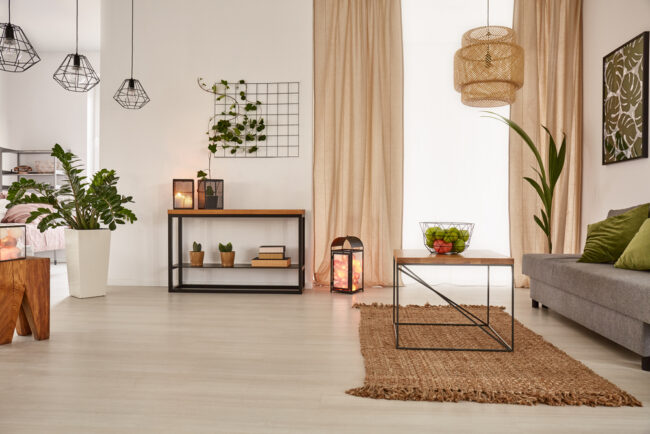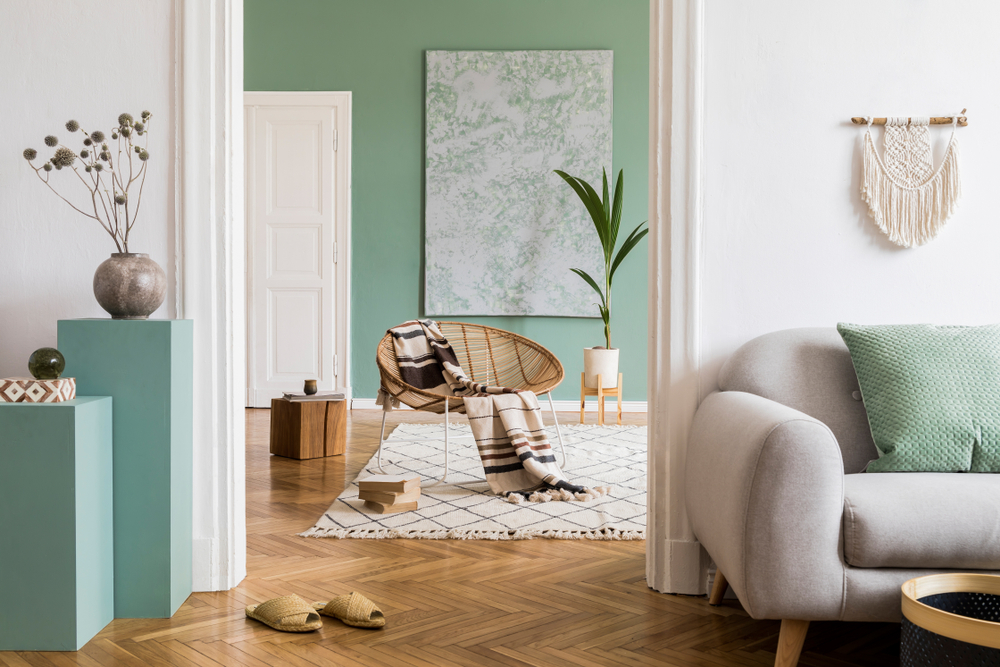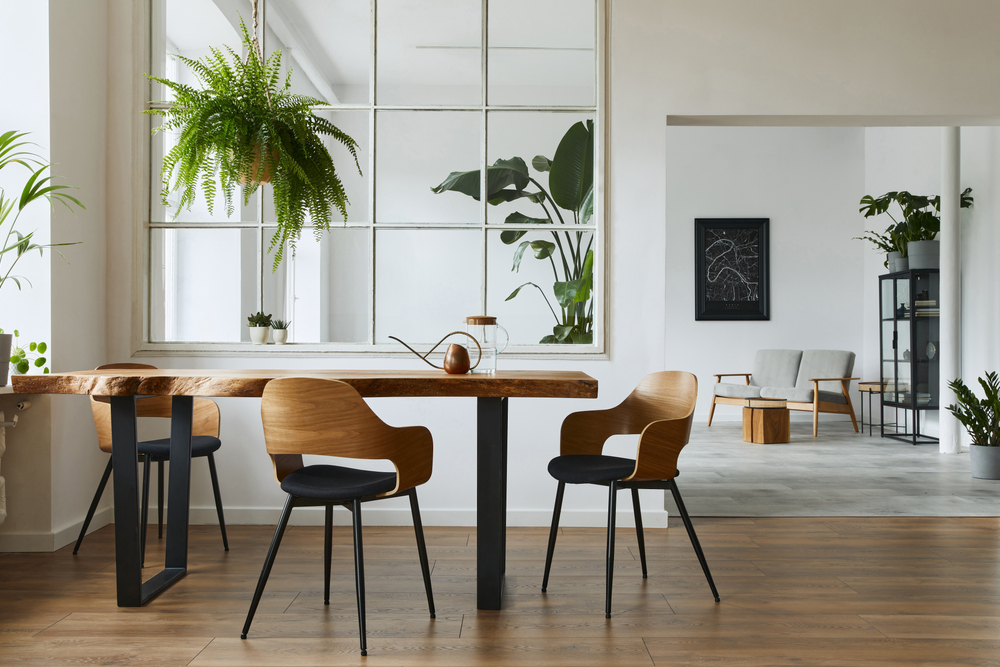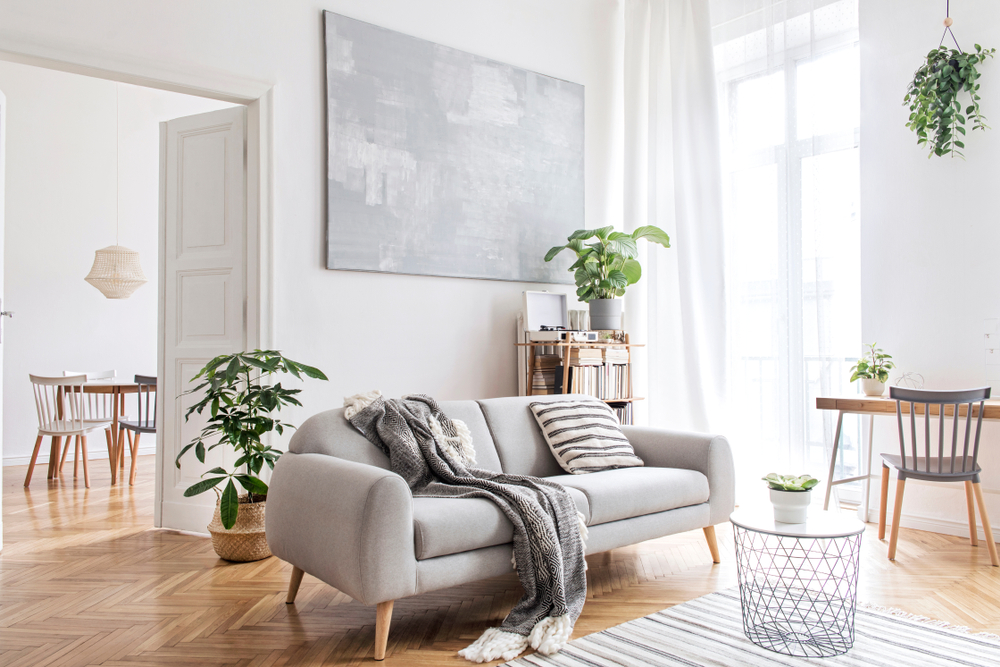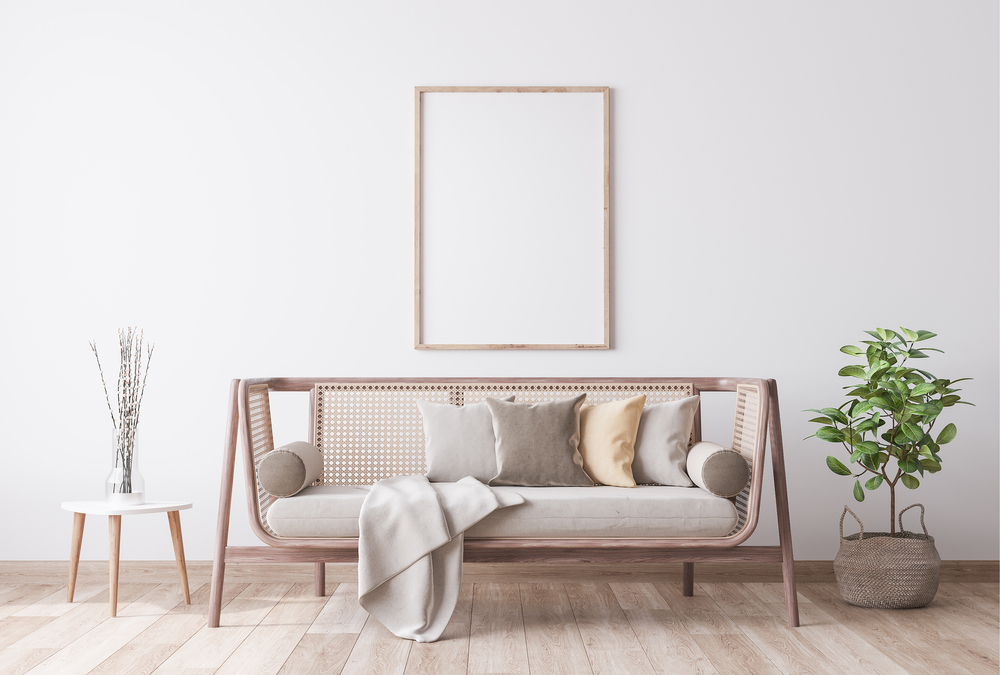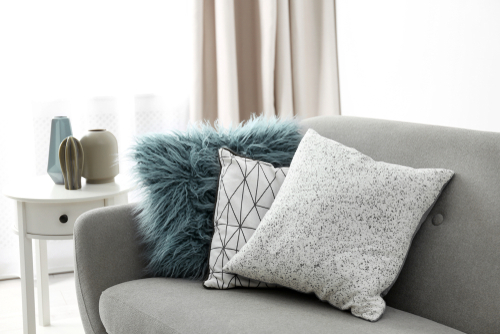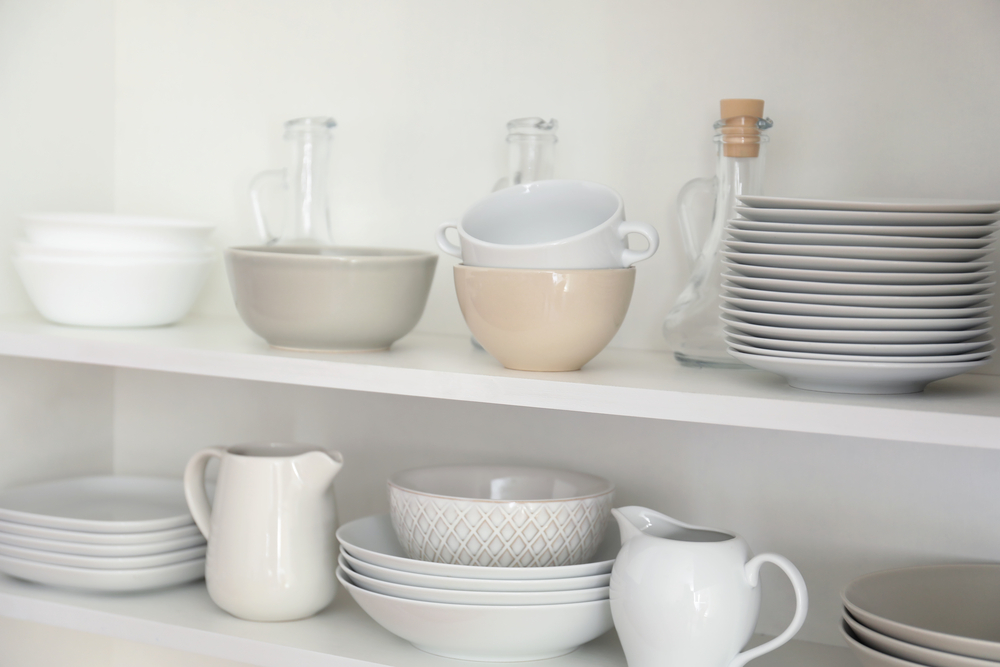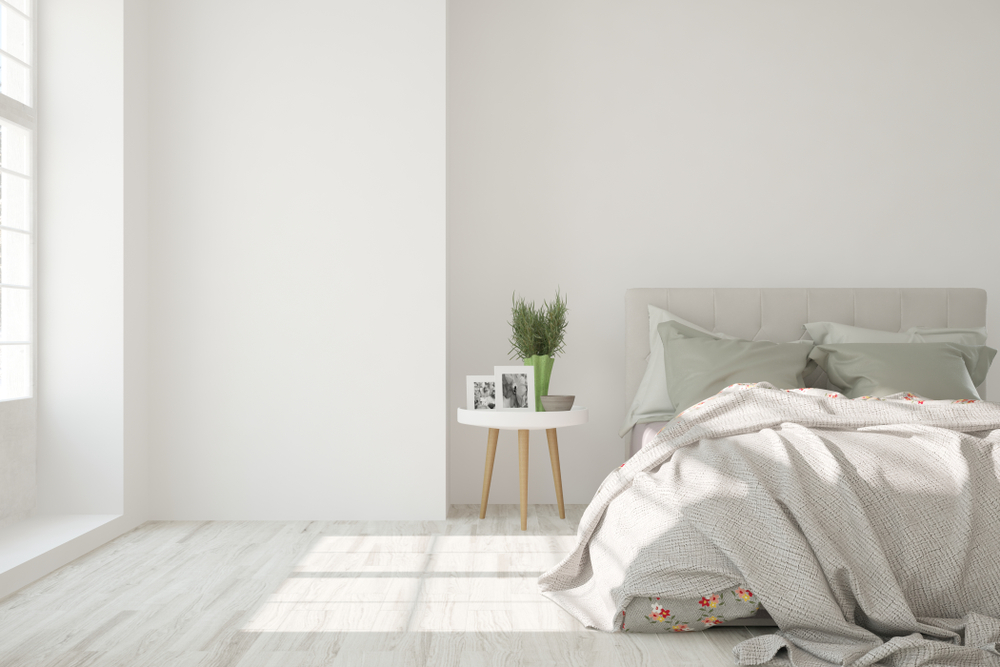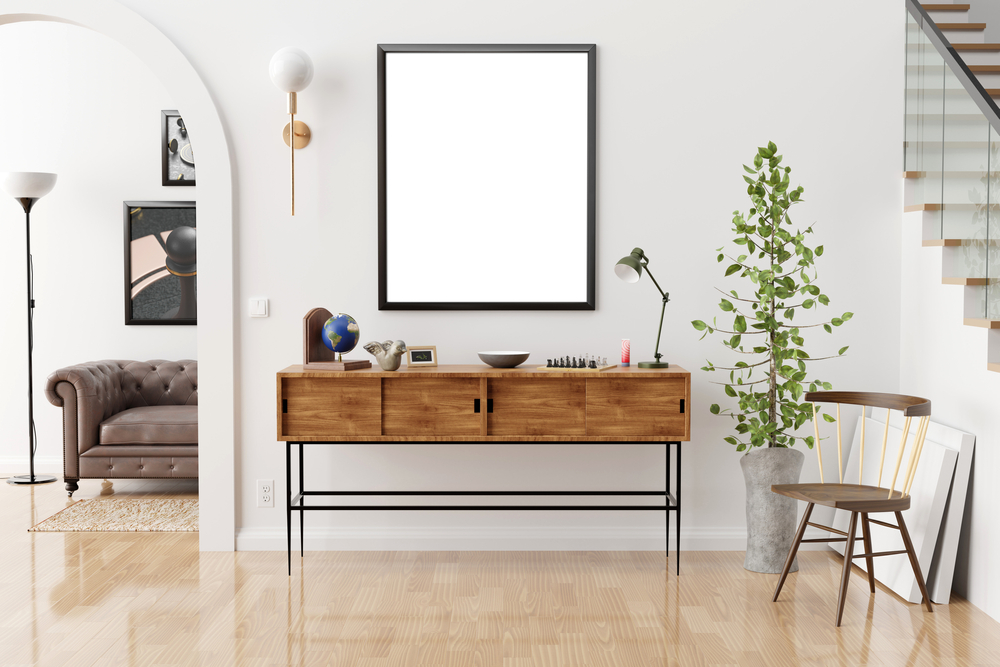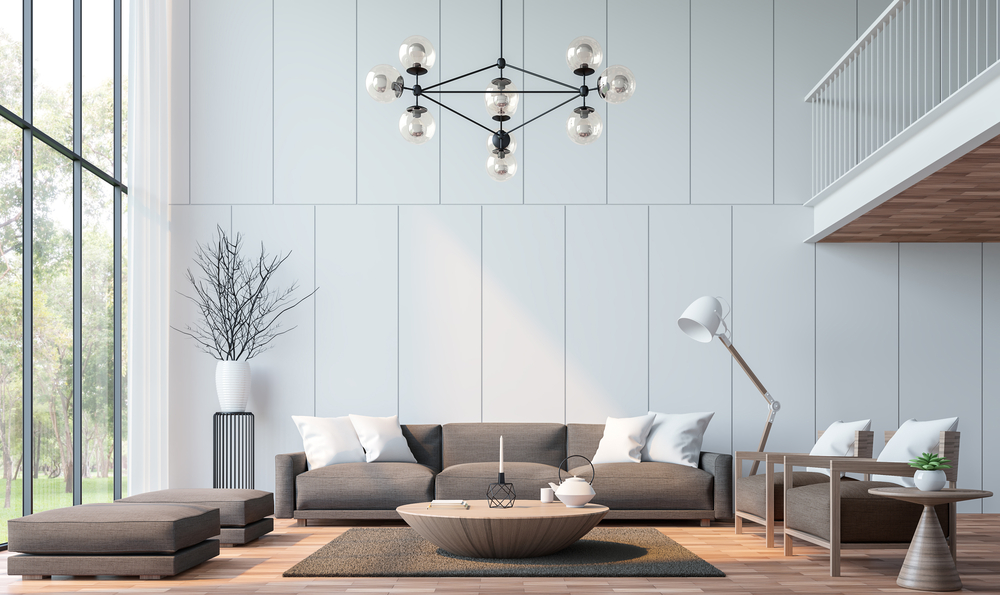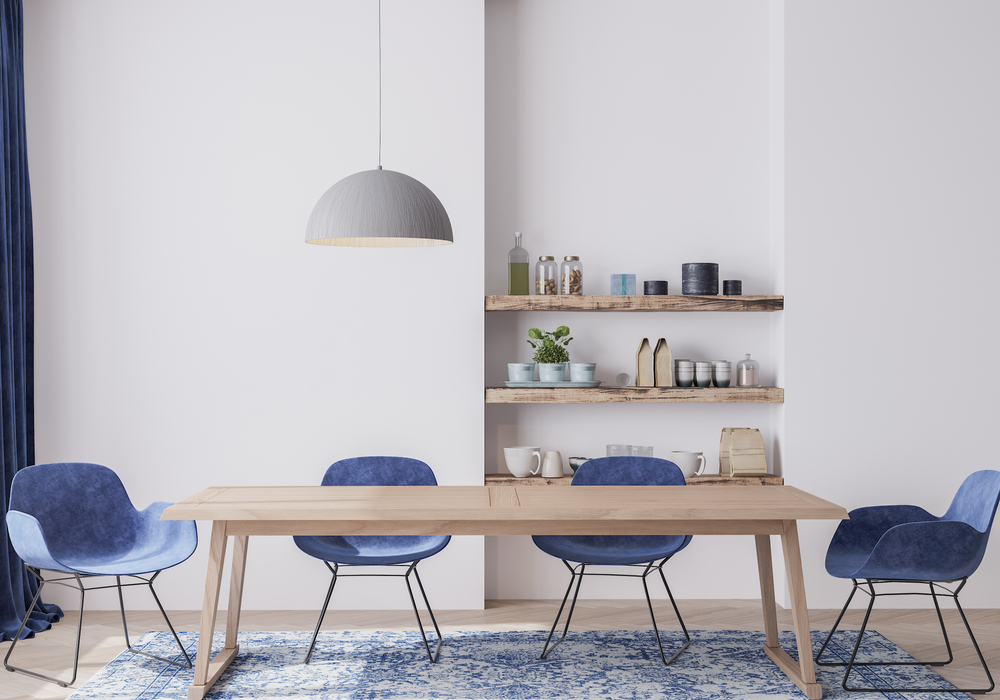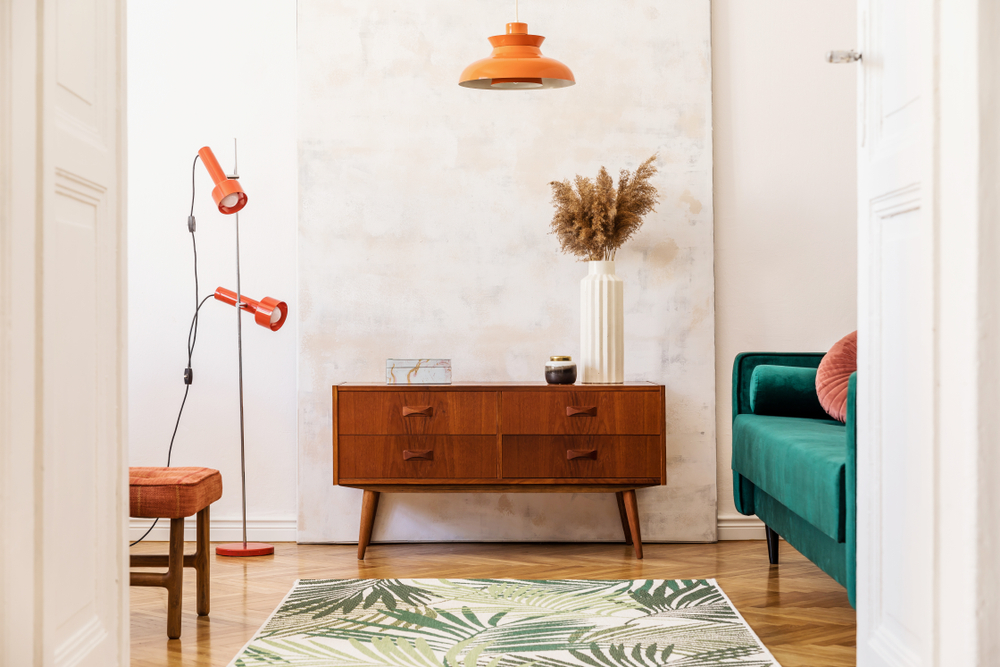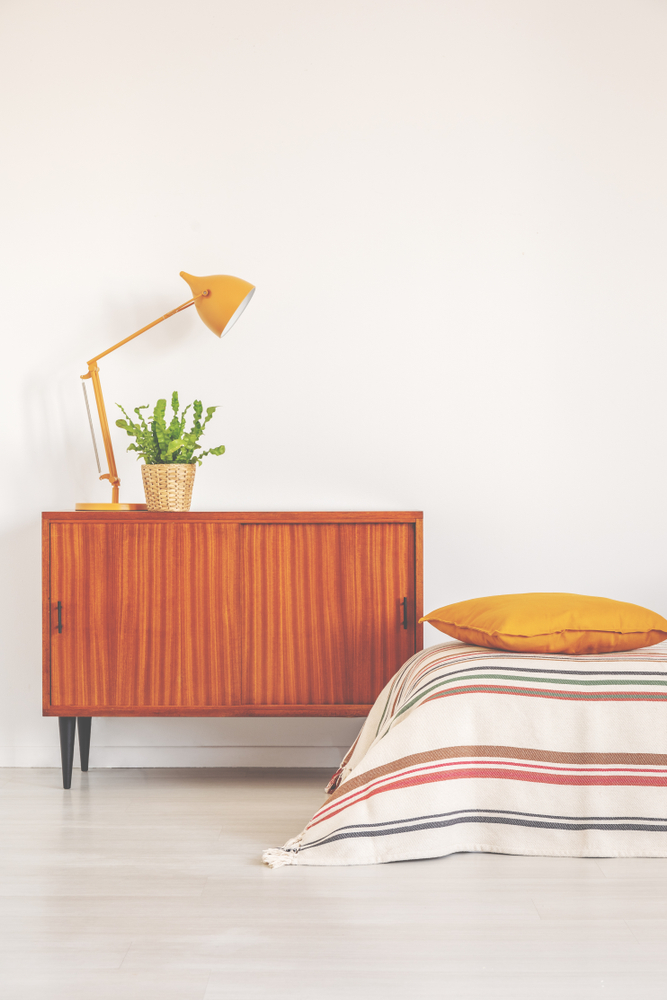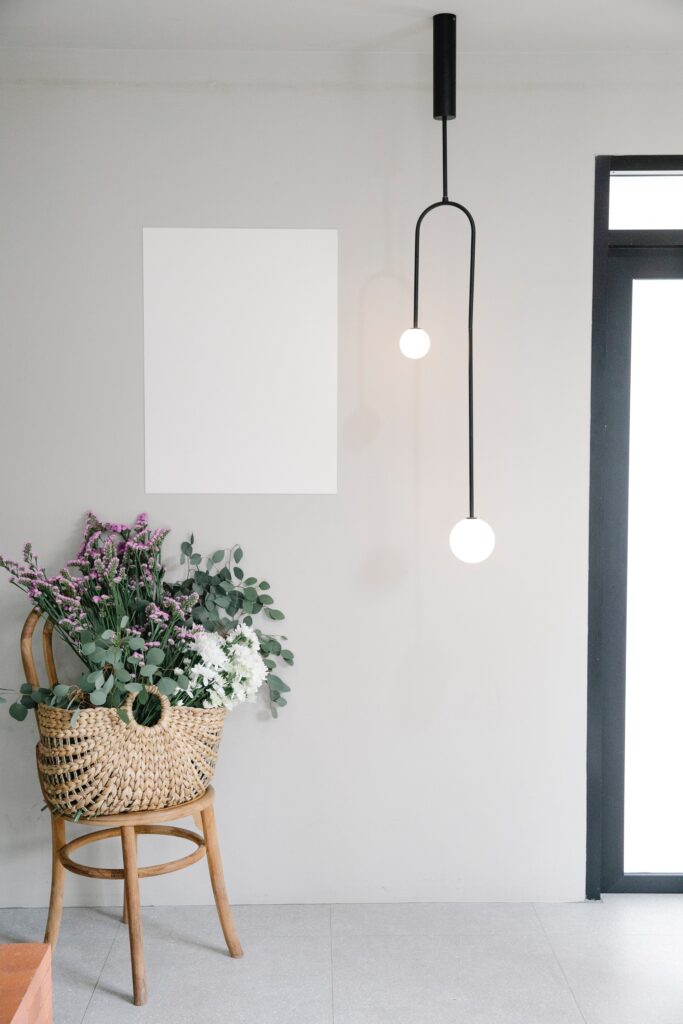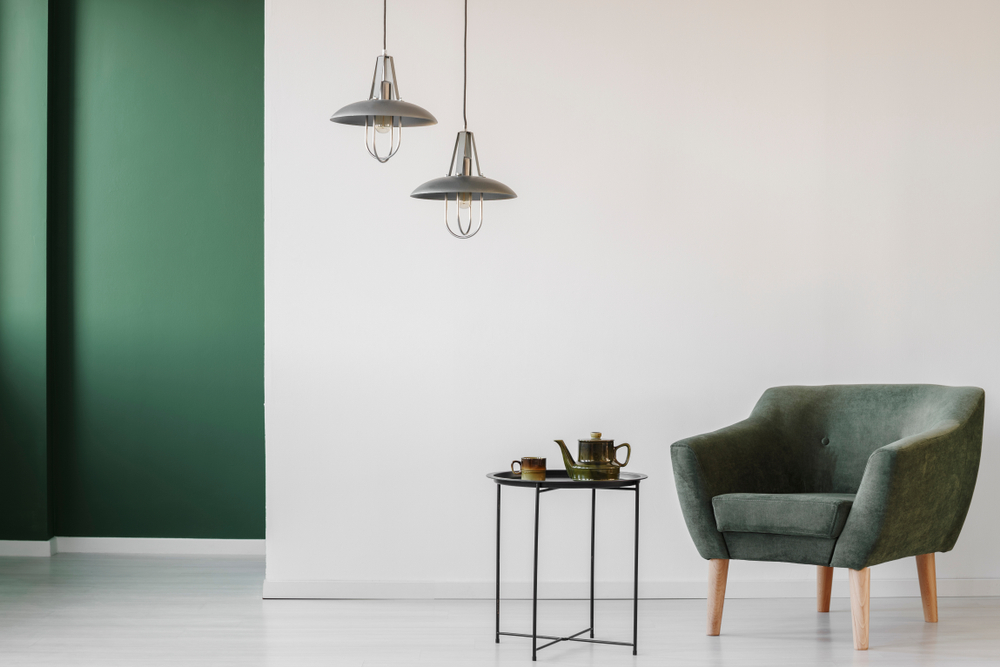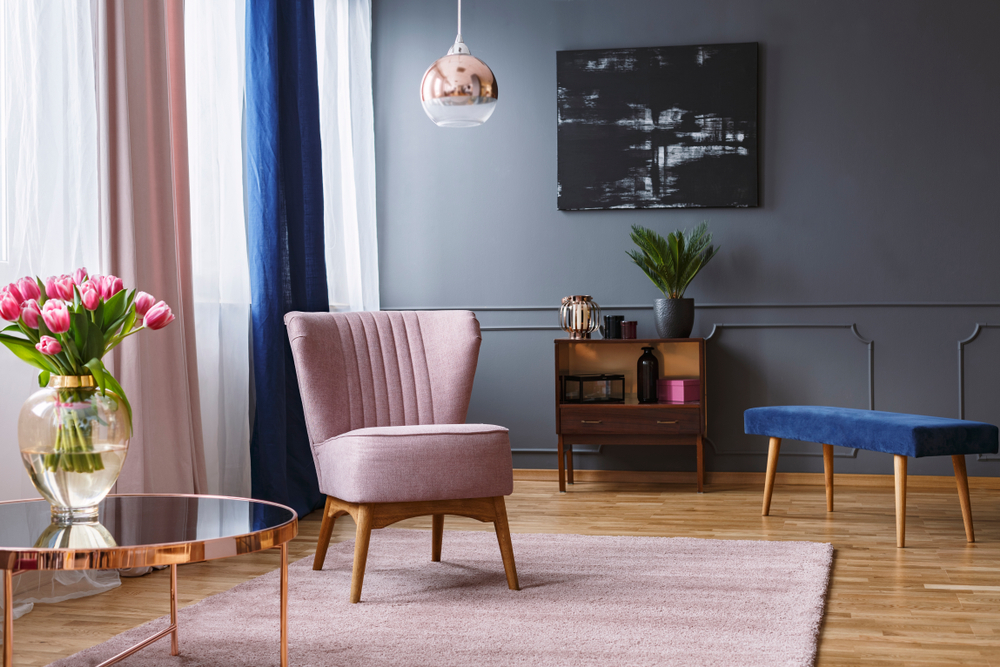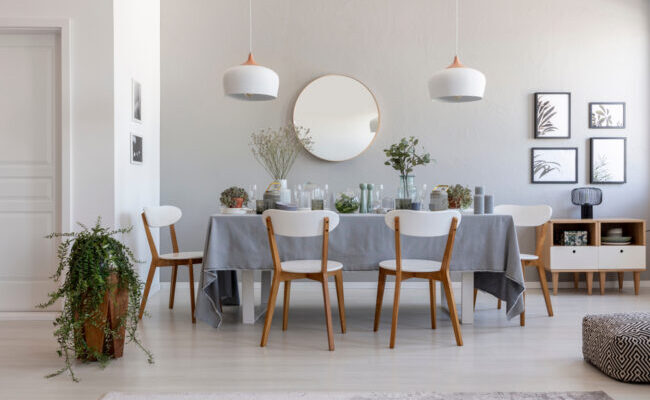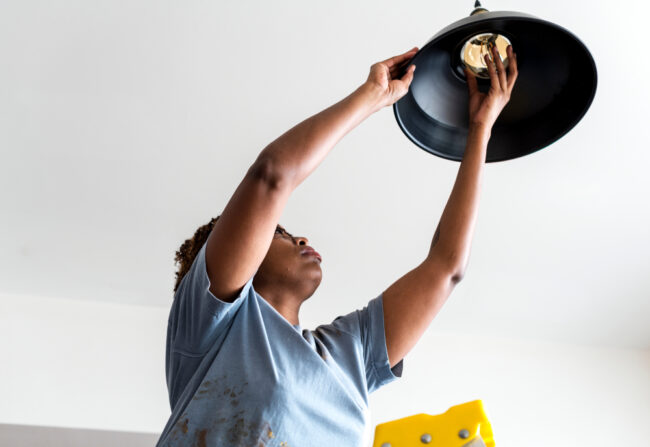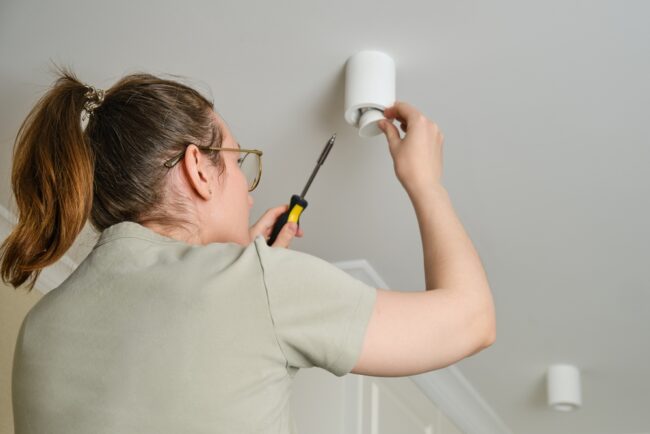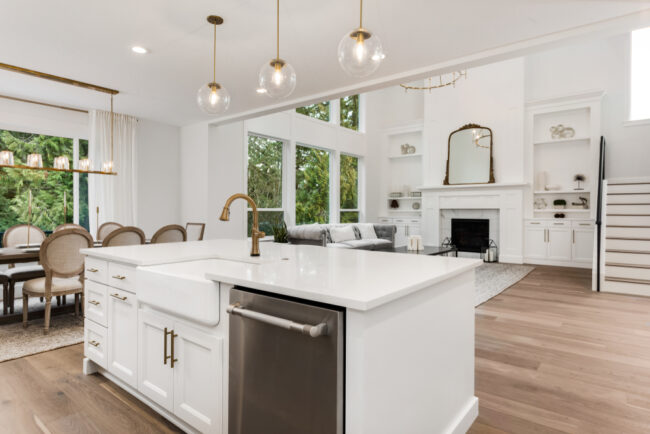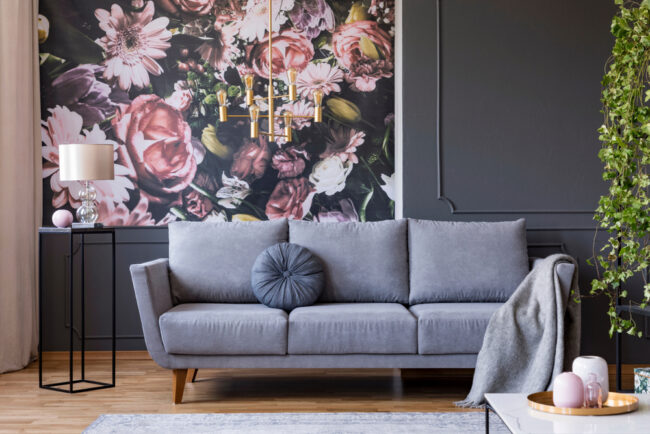Many homeowners fall into the trap of relying on paint and mirrors to lighten up a room. While these are tricks that work, they’re just bandaid fixes that ultimately limit your design options. One of the best ways to make your house a home is to have great lighting in each room. And just as every room has a different function, and they all have their own lighting needs.
Don’t worry, it’s not as complicated as it sounds! Getting the best lighting set up is almost always a simple undertaking, and this is something that can be done on any budget.
Set aside some time to do a tour of your home, looking specifically for places where your lighting just isn’t doing you any favors. To help you out, we created a checklist you can use to find what’s missing.
- Front Exterior
- Entry
- Living Room
- Kitchen
- Dining
- Bathrooms
- Office
- Bedroom
- Backyard
Front Exterior

The front of your house carries a lot of weight. It’s what you drive up to, what your friends and family see first, and plays a big role in your relationship with your neighbors. It also is the first line of defense against intruders. If your curb appeal is lacking, look for these things:
- A well-lit door: What’s better than coming home to warm, golden light washing over your front door? If your exterior feels dim or dingy, you’d be surprised at how dramatic a transformation you’ll get when you replace the fixtures by your door.
- Sidewalk lights: Keep you and your visitors safe with sidewalk lights leading to and from your home. They also add a little fairy light magic to your home!
- Motion sensor flood light: Any motion sensing light is a great way to increase your home’s safety. Flood lights are an added bonus, as sudden bright light usually scares off intruders – whether human or pest.
Entryway
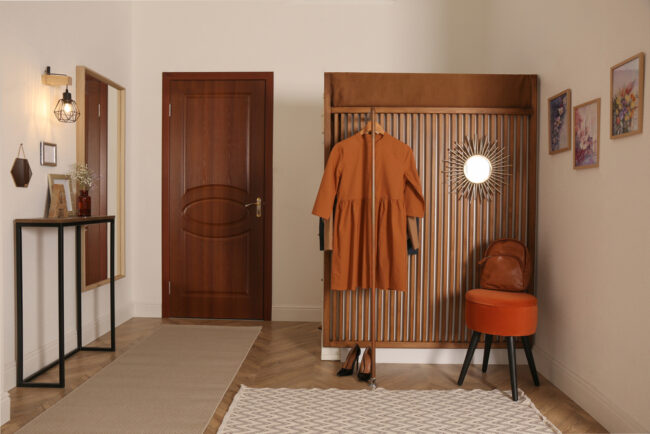
Crossing the threshold is an important moment. When you walk through the door, you’re looking for a place to relax and be yourself after work, running errands, or shuffling the kids to activities. Your entryway sets the tone for your home for you and your for your guests – don’t skip out on the lighting in here!
- Buffet table catch-all: Use a lamp on a buffet table to make it easier to take off shoes after a late night. Small space? Use reflective finishes to add some extra light.
- Smart lighting for smooth entry: Smart bulbs can be set to a schedule to keep your entryway ready at all times. Some can even turn on automatically when you arrive, or respond to voice commands when your hands are full.
- Wall/Ceiling Lights: If your entryway feels to dim or too harsh, try swapping out the bulbs in your fixtures with LEDs with a different lumen count (measures brightness) or a different light “temperature”. (Warm/soft white bulbs make you feel cozy and comfortable, and bright/daylight bulbs will make you feel alert.) Some smart bulbs can even switch back and forth with the help of a small remote or a smart home hub.
Living Room
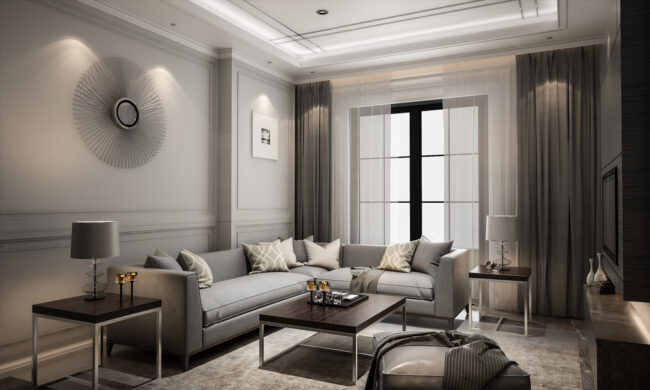
Your living room is the hub for comfy entertaining and family relaxing. You need it to be well-lit but still cozy. Consider these:.
- Ditch boring fixtures: You living room is a great place to choose more decorative fixtures. Find something that speaks to your soul and swap it out. It’ll instantly boost your mood every time you walk into the room!
- Mood lighting: Nail mood lighting by making sure you have light coming from more than just a single overhead light. Lamps and sconces shine a quiet, cozy light when the main light is off – perfect for a relaxing evening at home.
- Media lighting: Movie nights are core memories – but staring at a screen in a dark room is hard on your eyes. For the film aficionados and gamers alike, we recommend either backlighting your TV with an LED strip light or keeping a couple of dim lamps around.
Kitchen
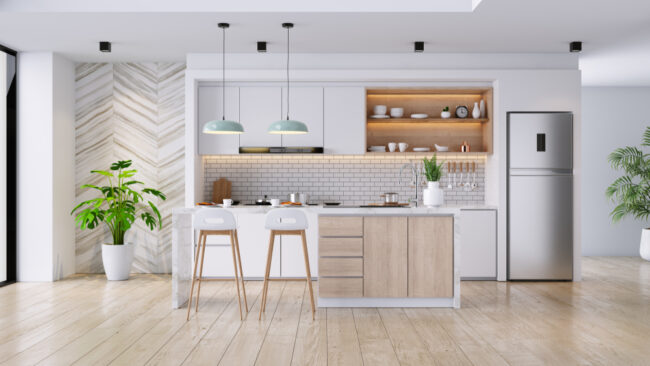
Your kitchen is the heart of the home, used for both focused work and for entertaining. That means you need to pay close attention to light layering so you can quickly flip from one function to another.
-
- Task lighting: Bright lights are necessary for safe cooking! Light your countertops with island pendants and LEDs under cabinets lights to improve your accuracy while dicing and sauteing.
- Dimmable lights: Late night snack turned heartfelt conversation with cocoa? Install dimmable lights so you can create a space for more intimate moments that’s away from harsh lighting.
- Light up your cabinets: Want to make your cabinets look high-end without high-end work? Use LED strip lights inside glass-fronted cabinets for a curated look, or put LED pucks on top of the cabinets to reflect light upwards and make the room feel bigger.
Dining Room

Have you ever noticed that most restaurants are pretty dark? That’s because people talk more, eat slower, and stay longer in a relaxed atmosphere. Recreating this ambiance in your home is sure to make your meals more enjoyable.
- Comfy Cozy: Use warm bulbs in your fixtures to create a cozy vibe. Look for bulbs that say “soft white” or that are less than 3000K. If it’s in the budget, swap out that flush mount light with a chandelier or pendants light-filtering shades to wash your space with soft, warm light.
- Try candles: Adding candles is a quick and easy way to soften the space and increase the feeling of closeness. For apartment dwellers or those with young children, battery-powered candles are a great flameless alternative.
- Keep it separate: If your dining room is close to your kitchen, turn off the kitchen lights once you’re ready to eat so that your dining table is the center of attention.
Bathrooms
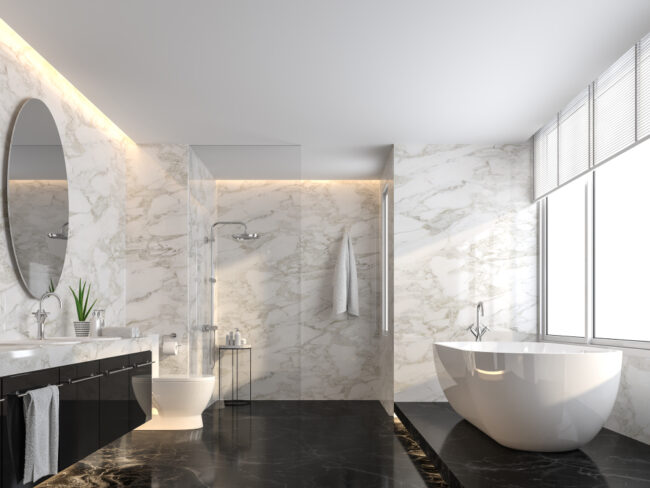
Bathrooms play multiple roles, so they need to have clever lighting. On the one hand, they are “get ready central,” where true light is critical to having great makeup and a clean shave. But, on the other hand, they are also a relaxation hub, where harsh lights won’t help.
- Bright lights for mirrors: Replacing the light above your mirror is a fast and simple project that will make a huge impact on both the functionality and overall appearance of your bathroom. Use bright, cool lights for the best makeup application and cleanest shave.
- Warm light for relaxation: Use warm light over tubs or showers to help you relax in the water after a long week. No lights over the tub? A warm night-light or set of LED candles will give you the same feeling!
- Use multiple light switches: You can easily custom control the lights for each activity.
Home Office

Spending a lot time in the home office these days? Your office lighting impacts the quality of your work, so take a minute to assess what you need to do your best.
- Update your overhead lighting: Get rid of that builder-grade light and put in a cool chandelier or pendant to jumpstart your creativity.
- Modern deks lamps: Make sure you have plenty of light for your workspace with a great lamp. If you’re on video calls often, try shining the light on the wall in front of you rather than directly on your face – it’ll bounce back and give a softer light that’s easier on your eyes.
- Create a designated recharge area: Set aside a corner in your office to take a few breaks during the day. Get a comfy chair and soft lighting so your brain can rest and recharge between meetings.
Bedrooms
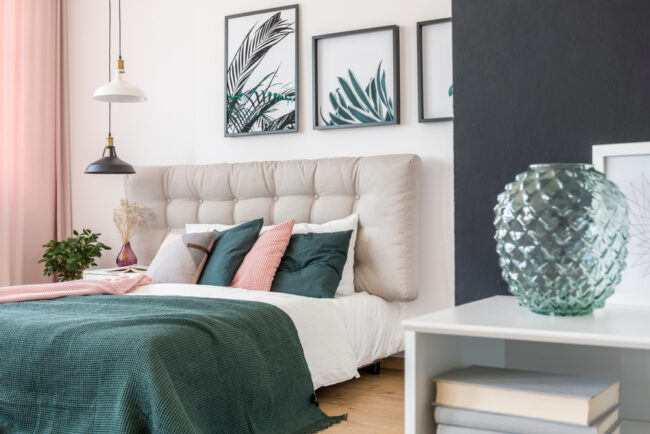
Your bedroom is your place to relax, unwind, and get a full night’s rest. However, the lighting in your room will significantly impact your ability to shut off your brain and get deep into that REM sleep.
- Prepare for rest: Blue light (like the light from daylight LEDs and from phone or TV screens) will keep your brain awake, so avoid blue light sources for 1-2 hours before bed. Use soft, warm light bulbs only in your room!
- Be careful with tech: We’re strong believers in mood lighting – but those tiny LED lights on power cables, alarm clocks, speakers, etc. are not it. Remove what you can, and cover the rest with dimming stickers.
- Lighting you feel: Focus on how you feel. Swap out old fixtures or lamps that you don’t love with something that you’ll enjoy seeing every night. Too warm? Replace your overhead light with a ceiling fan so you can rest comfortably.
Pro tip: It’s okay to use brighter, whiter lights in your closet so you have a place to check the true colors of your outfit before you head out for the day.
Backyard
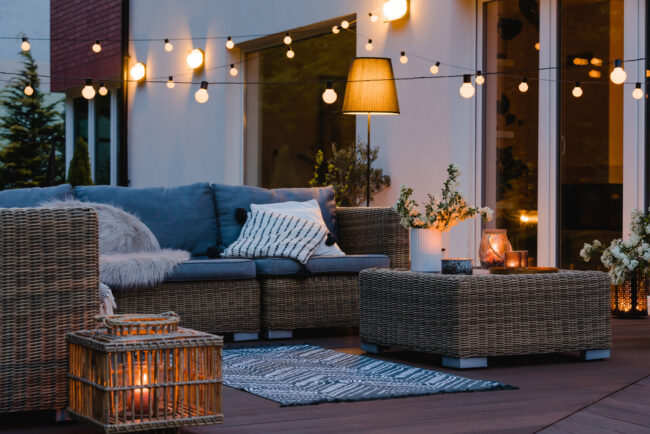
Once you’ve walked through each room, don’t forget to check your outdoor space! Whether it’s a big suburban yard or a small 5th floor balcony, it should be a great place to spend long summer nights while keeping you and your family safe.
- Bring the magic: Fairy lights or string lights feel like a luxury, but they’re actually really affordable and easy to hang. They’ll bring a little bit of magic to your nights whether it’s an evening party with friends or a backyard campout with the kids.
- Proper lighting for activities: Make sure your yard has adequate lighting for all of the ways you use it. Install flood lights in active areas like basketball hoops. Put in a row of solar path lights along walkways.
- Exterior lights: If your patio is too dim, it might be an easier fix than you realize. Replace that tiny, old wall sconce light with a modern fixture. If you need lots of light – opt for a fixture with multiple bulbs and/or clear glass.
Don’t Stress It
Great lighting is an essential part of a well-designed and a fully functioning home – but it can be challenging to nail balanced brightness, great fixtures, and a budget! The biggest thing to remember, TL;DR of it all is that you need to have multiple sources of light in each room. Lamps and smart bulbs are your friend!
If you want some help getting it right, contact the experts at Western Chandelier for advice on your project! Lighting is what we do – so we’re not going to toss you the closest box off a shelf and say “have at it!” If you’re not happy with your home’s lighting, we’ll help you find what’s right for you.
